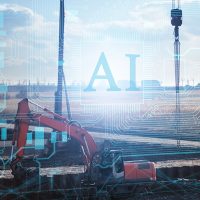
What Is Artificial Intelligence?
Artificial Intelligence and Machine Learning are among the most significant technological advancements over recent years. They are becoming essential technologies for nearly every industry to help organizations streamline business processes, make better business decisions, and maintain a competitive advantage. Artificial Intelligence and Machine Learning are closely related, but still, there are some differences between these two, which we’ll explore below.
Artificial Intelligence is a branch of computer science trying to bring human thinking capability and behavior into machines, whereas Machine Learning is a subset of Artificial Intelligence allowing machines to automatically learn from data without being programmed for specific tasks.
Artificial Intelligence aims to build machines that can simulate cognitive functions associated with human intelligence, such as learning, reasoning, and problem-solving. That is to say, Artificial Intelligence makes computers smart and intelligent by teaching them to think and perform like humans.
Currently, Artificial Intelligence is known as narrow AI, meaning it is mostly used to solve a specific problem it is designed to solve. For example, AI could develop computers to compete with humans in playing chess or solving equations, but the same machine could not solve a complex problem or outperform humans at other cognitive tasks. So the long-term goal would be to create general AI that could carry out a variety of tasks, learn and solve any given problem. Scientists still have a long way to go before achieving strong AI that could truly understand humans, would be equal to human intelligence, and would have self-aware consciousness. It is true that AI moves on quickly, but for now, the concept of strong Artificial Intelligence is more of a theoretical concept rather than a reality.
One of the greatest benefits of Artificial Intelligence is the ability to manage large amounts of data and make operations more efficient. With this potential, AI can support companies in business process automation, data analysis and real-time insights, predictive analytics, improved customer experience, and profit enhancement. According to a PwC report, around 54% of executives have already seen an increase in overall productivity after integrating AI solutions into their businesses.
What Is Machine Learning?
Machine Learning is about extracting meaningful information from data and learning from experiments through self-improvement. Machine Learning models look for patterns in data and go from data to decision-making without human intervention. Machine Learning algorithms can process large amounts of data, improve from experience continuously and make predictions based on historical data. They are not being programmed to make step by step decisions, you give them examples, and they learn what to do from data. When the algorithm gets good enough to draw the right conclusions, it applies that knowledge to new data sets. The flow of creating a machine learning model is collecting data, training the algorithm, trying it out, collecting the feedback to make the algorithm better and achieve higher accuracy and performance.
This makes machine learning suitable not only for daily life applications but it is also an effective and innovative way to solve real-world problems in a business environment. A study by Refinitiv found that according to data scientists and top executives, the key driving factors of integrating machine learning are extracting better quality data (60%), boosting productivity and speed in business operations (48%), cutting down expenses (46%), and extracting more value from data (31%).
Some examples of machine learning in our daily life include virtual assistants, recommendation systems like Amazon and Netflix, self-driving cars, email spam filtering, disease identification and diagnosis, commute predictions, video surveillance, and more. Business benefits of Machine Learning may include user behavior analysis, improved automation, product personalization, customer service improvement, churn prediction, predictive maintenance, financial analysis, fraud detection, and security enhancement.
Artificial Intelligence vs Machine Learning
Now that we have a fair understanding of AI and ML, let’s compare these two terms and have a detailed look at the key differences between them.
Artificial Intelligence
- Artificial Intelligence is a technology that enables machines to mimic human intelligence.
- AI aims to make a computer system that solves complex problems requiring human intelligence.
- AI tries to create intelligent systems to carry out various complex tasks as humans do.
- The two primary subsets of AI are machine learning and deep learning.
- AI offers a huge variety of applications.
- Some practical examples of AI are Siri, AI-based chatbots, smart humanoid robots, etc.
- The three types of AI are Weak AI, General AI, and Strong AI.
Machine Learning
- ML is a branch of Artificial Intelligence that allows machines to self-learn from past data without any programming.
- ML aims to enable computer systems to learn from data so that they can produce accurate results.
- ML tries to create machines to carry out a specific task for which it is trained.
- The major subset of ML is deep learning.
- ML is limited in its applications.
- Some practical examples of ML are recommendation systems, Google search algorithms, automatic suggestions for friend tagging on Facebook, etc.
- The three types of ML are Supervised learning, Unsupervised learning, and Reinforcement learning.
Artificial Intelligence and Machine Learning facilitate the automation of various business processes across different sectors, and more and more companies are looking for ways to integrate these technologies to make their business more automated and data-driven. All these benefits make AI and ML a value-adding business solution for companies to improve the performance of their operations, enhance customer experience and increase the company’s competitive advantage in their industry.
By Siranush Andriasyan

SmartClick is a full-service software provider delivering artificial intelligence & machine learning solutions for businesses.


